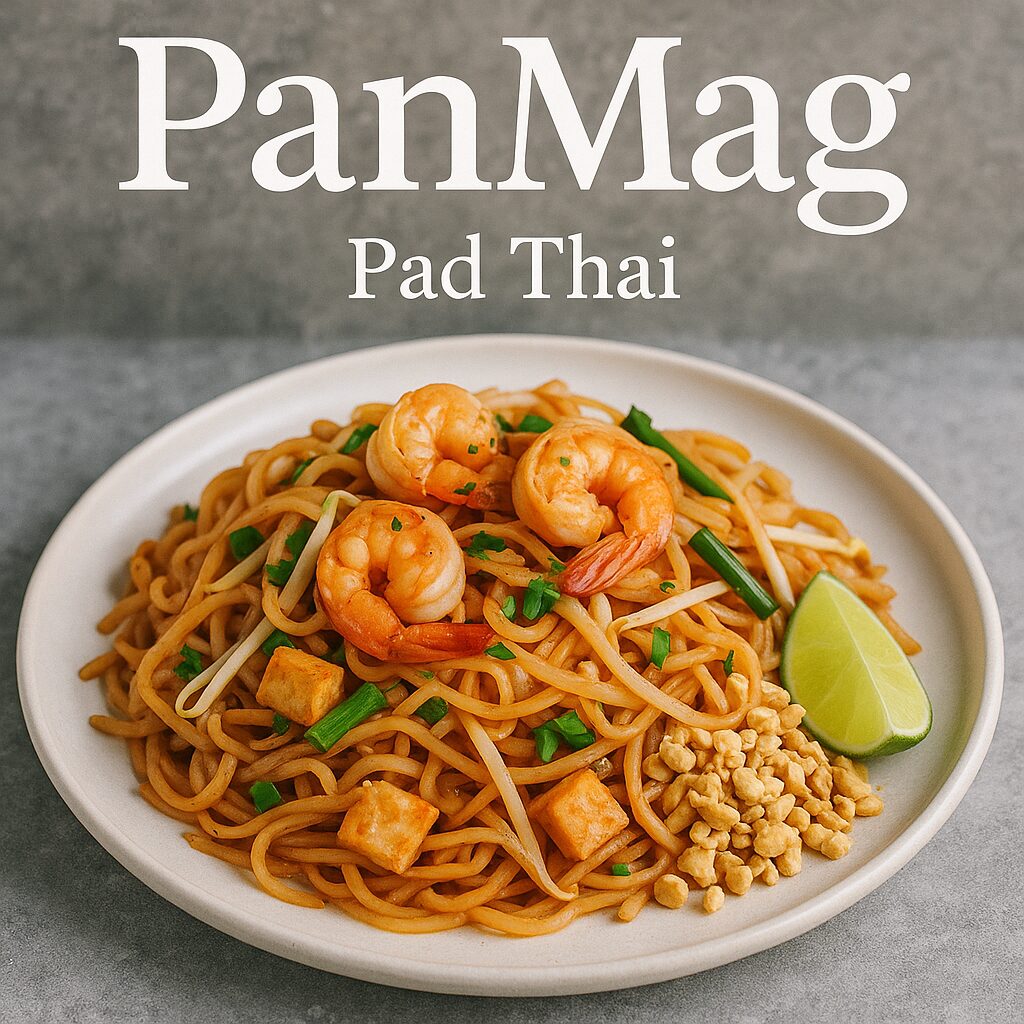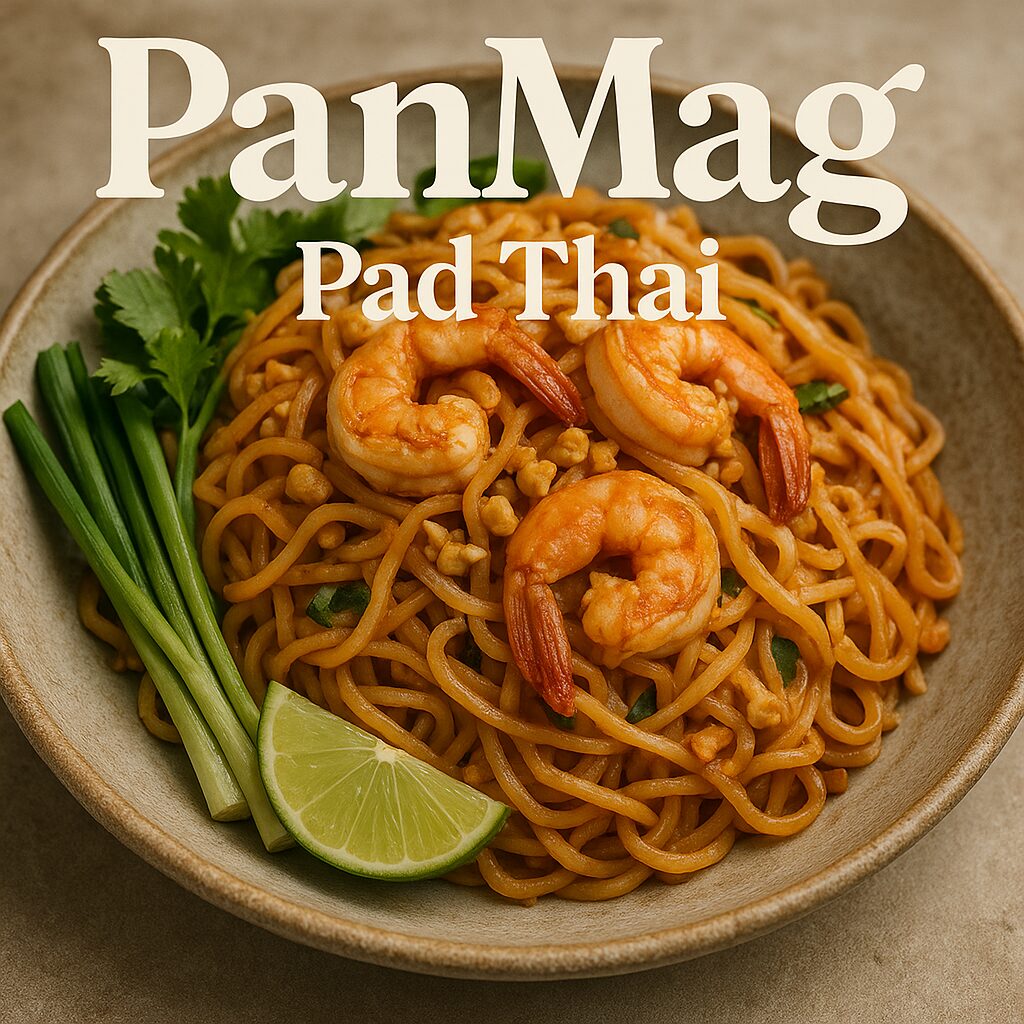Pad Thai Recipe
Summary:
I remember feeling intimidated the first time I tried to cook Pad Thai at home, but this Pad Thai recipe changed everything for me. It’s a quick and straightforward guide that brings Thailand’s vibrant, tangy-sweet flavours into your kitchen in about 30 minutes. Whether you make it vegetarian with tofu or add juicy chicken or shrimp, this dish turns out comforting and delicious every time. The rice noodles are tossed in a crave-worthy sauce made with tamarind, fish sauce, and a hint of spice, then sprinkled with crunchy peanuts. This quick Pad Thai recipe will have you cooking confidently, and it tastes like a warm hug from your favourite Thai restaurant.
Equipment:
- Wok or large skillet
- Large bowl (for soaking noodles)
- Knife and cutting board
- Mixing bowl and whisk
- Tongs or spatula
Ingredients:
- 8 ounces flat rice noodles
- 2 tablespoons vegetable oil (for stir-frying)
- 3 cloves garlic, minced
- 8 ounces protein of choice (sliced chicken breast, shrimp, or firm tofu cut into cubes)
- 2 eggs, beaten
- 2 cups bean sprouts
- 1 green onion (or handful of garlic chives), chopped into 1-inch pieces
- 1 red bell pepper, thinly sliced (optional, for extra crunch and colour)
- 1/2 cup roasted peanuts, roughly chopped (plus extra for garnish)
- 2 limes, cut into wedges (for serving)
For the Pad Thai sauce:
- 3 tablespoons fish sauce
- 3 tablespoons brown sugar (or palm sugar)
- 2 tablespoons tamarind paste (or two tablespoons rice vinegar as a substitute)
- 1 tablespoon soy sauce (low-sodium preferred)
- 1 tablespoon Sriracha or chilli garlic sauce (adjust to taste)
Instructions:
- Prepare the noodles: Place the dry rice noodles in a large bowl and pour hot (near-boiling) water over them. Soak for 5–10 minutes, stirring occasionally, until the noodles are pliable but not completely soft. Drain and rinse the noodles under cold water to stop the cooking. Set them aside. (If not using immediately, toss the drained noodles with a tiny drizzle of oil to prevent sticking.)
- Mix the Pad Thai sauce: In a small bowl, whisk together the fish sauce, brown sugar, tamarind paste (or vinegar), soy sauce, and Sriracha. This sauce should taste strong – a balance of sweet, salty, and sour (with a kick of heat). Set it aside within reach of the stove.
- Stir-fry the protein and aromatics: Heat 1 tablespoon of oil in a wok or large skillet over medium-high heat. Add the minced garlic and your chosen protein (chicken, shrimp, or tofu). If you’re using chicken, stir-fry for about 4–5 minutes until it’s cooked through (no longer pink inside). If using shrimp, cook for 2–3 minutes until they turn pink and curl up. Tofu can be fried for 3–4 minutes until lightly golden on the edges. Toss in the bell pepper slices at this stage (if using) and stir-fry for another minute. The aroma of garlic and sizzling protein will make your kitchen smell like a Thai restaurant! (That’s the magic of a great pad thai recipe.)
- Scramble the eggs: Push the contents of the pan to one side to make space, and pour the beaten eggs into the other. Let them sit for a few seconds, then scramble them with your spatula until they form soft curds. Mix the cooked egg pieces in with the chicken/shrimp/tofu. This adds heartiness and authentic texture to the Pad Thai.
- Add noodles and sauce: Add the drained rice noodles to the pan. Pour the prepared Pad Thai sauce over the noodles. Use tongs to toss everything together to combine the noodles, protein, and egg. Keep stir-frying for 2–3 minutes. The noodles will soften the rest and soak up the savoury sauce. If things look too dry or the noodles aren’t tender enough, add a splash of water (a tablespoon or two) and continue tossing. Now your pad thai recipe is coming together beautifully – you’ll see the noodles turn a glossy golden-brown from the sauce.
- Toss in sprouts and serve: Turn off the heat and add the fresh bean sprouts and green onion pieces. Give everything one last toss to mix well. The residual heat will slightly soften the sprouts without making them soggy, keeping some crunch. Serve your Pad Thai immediately while hot. Plate it up and top each serving with a generous sprinkle of chopped peanuts. Squeeze a lime wedge over each portion before digging in for that extra zing. Enjoy your homemade Pad Thai! You’ve just created a restaurant-quality pad thai recipe in your kitchen, and it’s time to savour every bite.

Notes:
Cooking Pad Thai at home is a joyful experience; a few personal touches can make it even better. This pad thai recipe is meant to be flexible – if you prefer a vegetarian pad thai recipe, stick with tofu and swap the fish sauce for a vegetarian alternative or a bit more soy sauce. You can also leave out the eggs to make it vegan. On the other hand, if you’re craving Chicken Pad Thai or Shrimp Pad Thai, add your favourite protein (or even mix two!). Remember, Pad Thai: Quick and Simple Guide is all about making the recipe work for you, so don’t be afraid to adjust the spice level or toss in extra veggies. The most crucial ingredient is cooking with love. This way, your Pad Thai will always be utterly satisfying and heartfelt, almost as if a friend were guiding you. Happy cooking!
